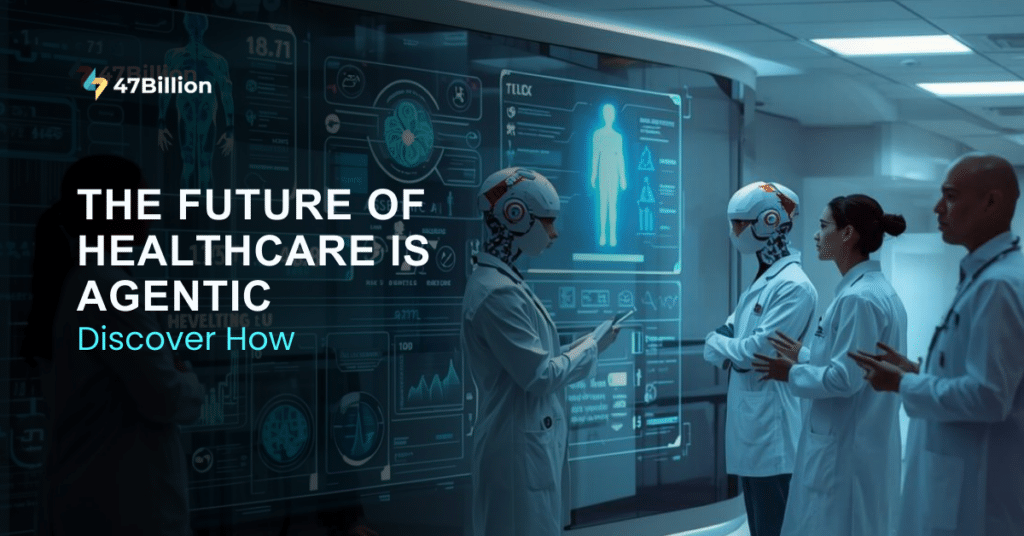A health insurance company analyses its data and discovers that a significant chunk of diabetic patients also suffers from retinopathy. Armed with this information, the providers used predictive analytics to determine the likely number of ophthalmology claims they might receive next year. Through prescriptive analytics, the company defines the scenarios where reimbursement costs for ophthalmology may fluctuate.
Businesses use predictive analytics to make informed decisions to drive cost-effective procedures and serve their customers better. In healthcare organizations, prescriptive analytics can play a vital role. Several data sources include patient-centric information, treatment plans, patient history, appointments, surgeries, radiological test reports, etc.
When fed into the prescriptive analytics model, this data ensures the proper staffing of healthcare organizations. Utilizing this data to identify patterns can help save costs from medical supplies to transport fees to the food budget.
Prescriptive Analytics
Prescriptive analytics is a set of mathematical techniques that help determine complex targets, requirements, and limitations for improving business outcomes. This approach determines various alternatives and guides based on descriptive and predictive analytics results. It is one of the hype cycle’s emerging technologies announced by Gartner in 2013. It has received increasingly growing attention in business areas.
Prescriptive analysis is the data analysis technique that provides predictions and context-customized information.
It enables healthcare decision-makers to optimize business outcomes by recommending the best action for patients or providers. It allows the comparison of multiple “What ifs” to assess the impact of choosing one step over another.
For example, a health insurer derives a pattern in its claims data for the past year to show a significant portion of its diabetic patient population suffers from retinopathy.
The insurers use predictive analytics to estimate the probability of an increase in ophthalmology claims during the next plan year. Prescriptive analytics identifies the cost impact of average ophthalmology reimbursement rate fluctuations and recommends suitable action.
Benefits of Prescriptive Analytics
It is the most innovative and effective tool to scaffold any organization’s business intelligence. The significant benefits are –
- Maps the path to success – Prescriptive models pull together the data and operations to produce the roadmap of an efficient workflow for your organization. AI takes the reins of business intelligence to apply simulated actions to a scenario to make the steps necessary to avoid failure or achieve success.
- Informed real-time and long-term business operations – Decision makers view real-time and forecasted data simultaneously to make decisions supporting sustained growth and success. It streamlines decision-making by offering specific recommendations.
- Makes time-consuming processes efficient – The instant turnaround of data analysis and outcome prediction helps reduce team efforts wasted in finding challenges and their resolution. AI curates and process data in less time as compared to manual processing.
- Reduces Human errors – Through more advanced algorithms and machine learning processes, prescriptive analytics provides more comprehensive and accurate data aggregation and analysis than descriptive and predictive analytics.
Descriptive and Prescriptive Analytics
The outcomes of implementing descriptive and predictive analysis are suitable when organizations simulate them in-house to define the best course of action. Descriptive and predictive analytics will not help in the given scenarios –
- Streamlining future healthcare marketing efforts
- Resolving inconsistent gaps in workflows
- Recommendations for more optimal results
And that’s where prescriptive analytics come into the picture.
How prescriptive analytics fills the gap?
Once you predict a set of outcomes, prescriptive analytics helps control those outcomes and channel them to your advantage. It also lets you understand how and which variables can help achieve the desired results.
These insights fortify the companies to evolve with environmental changes while making real-time decisions.
The major disciplines of prescriptive analytics are operation research, machine learning, natural language processing, and applied statistics. The healthcare industry is shifting to deliver value-based services to its patients. Prescriptive analytics is helping it fill the gap between information and decision-making.
Reduced Operating Cost
Predictive analytics tools give actionable insights on budgeting, accurate business planning, staffing levels, capacity and equipment requirement, inventory management, etc. It not only reduces operational costs but significantly reduces patient billing.
Improved Care
Clinical decision-making based on predictions can sometimes backfire. Prescriptive analytics with machine learning can provide data-based insights. This helps make clinical decisions critical to the health and treatment plans of patients. Data-driven advanced genome studies play a significant role in developing precision therapies.
Data Security
Increased usage of wearables and health-tracking devices generates a significant amount of user data. This data helps in clinical diagnostic purposes. The same applies to valuable clinical and diagnostic patient records that are highly prone to data breaches. Prescriptive analytics and Machine learning algorithms help identify user activity patterns to avoid further cyber-attacks.
Why Prescriptive analytics in Healthcare is the best option?
Healthcare meets all the requirements –
- Decision spaces involve patient information, treatment plans, resources, physical space, payment structure, and trade-offs (cost vs. quality).
- Objectives are defined, such as quality of care, access to care, probability cost, and customer satisfaction.
- It can maximize objectives and make their interplay with one another, for example, personnel hours across the system, treatment plans, patient affliction curves, minimum quality objectives, regularity, and budgets.
- The complexity and the corresponding impact of deploying optimization are very high.
Applications of prescriptive analytics in Healthcare
The use cases range from strategic to operational planning. Here are a few examples –
- Long-term business models/risk evaluation (e.g., physician employment, etc.)
- Network optimization of facilities and service lines – market share, quality, cost
- Optimization of facilities and service lines
- Population management/outreach program optimization, downstream, resource requirements, and financial performance
- Hospital constraint modeling to reduce cost and increase throughput understanding of cross-constraint impacts
- Optimization of the physician lineup, hospital lineup, and hospital resources (capacity, insources/out-source), to meet demand and financial targets
- Data-driven financial planning (such as based on demand source, e.g., physicians, ED)
- Clinical process design and optimization
- Resource allocation for revenue cycle management
47Billion has been working with several healthcare organizations for various data analytics and visualization solutions. These solutions drive unique and valuable insights that improve planning significantly.
Prescriptive analytics – Paving the future of Healthcare
The final phase of healthcare data analytics involves prescriptive insights. Prescriptive analytics is beyond the ability to predict an upcoming event and provide the capability to make a move. It indicates what is likely to occur and suggests the best actions to avoid or mitigate any adverse circumstance. This analytics methodology has a seamless and wholly integrated data analytics infrastructure. It can engage in the ultimate application of data in a large-scale or meaningful way. The future of prescriptive analytics is nearly unlimited in its scope and depth. So many healthcare providers are still trying to claw their way out of locked rooms of unused EHR data. An industry-wide push towards viewing Healthcare big data as the answer to so many critical questions is accelerating. The development of an infrastructure capable of becoming the foundation for prescriptive analytics and significant advances in patient care quality, timeliness, and effectiveness.
Write to us at hello@47billion.com for more information on leveraging Prescriptive Analytics for your healthcare business.







